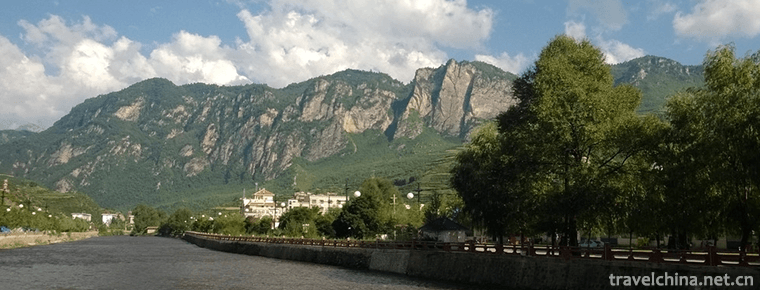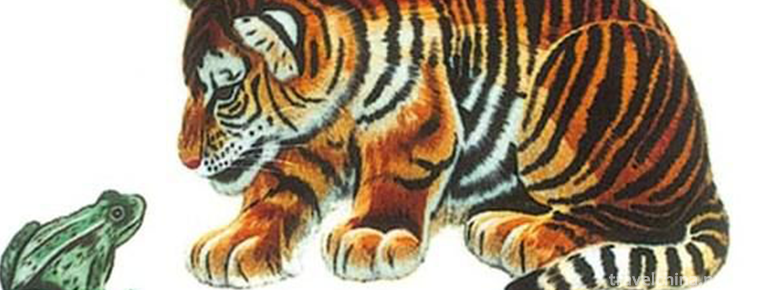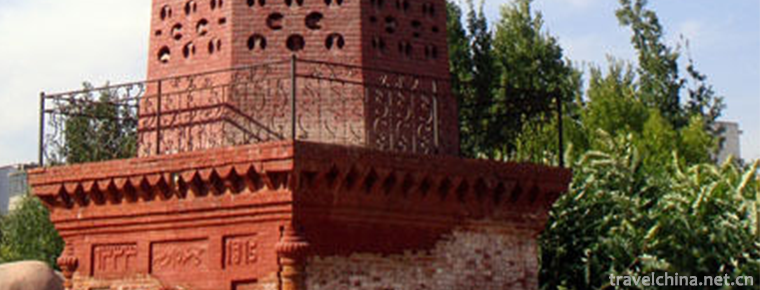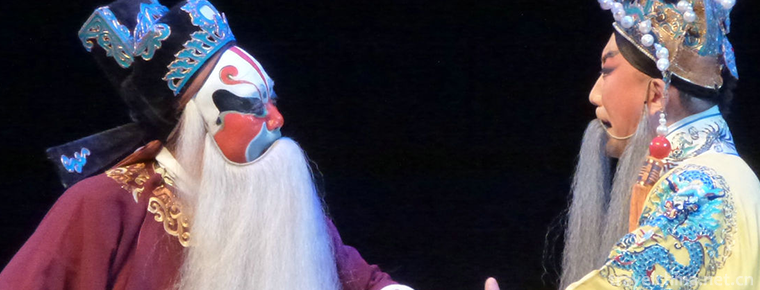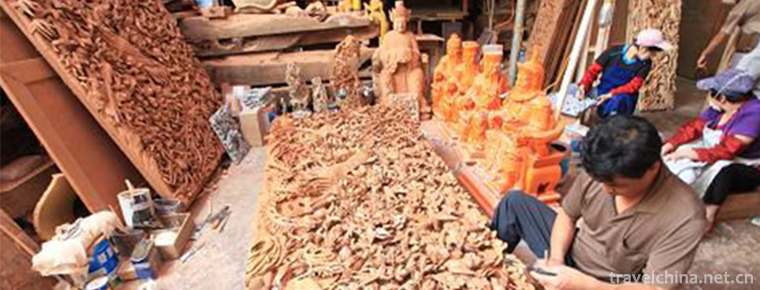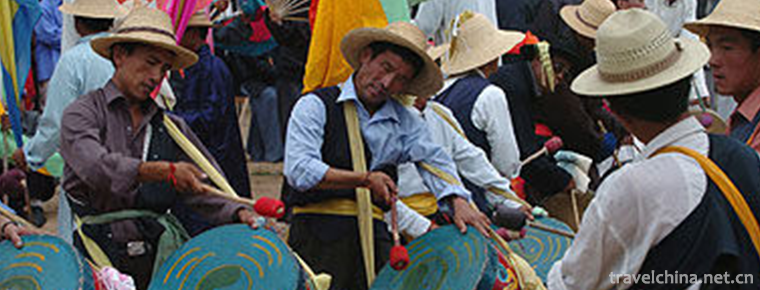Liu Zi Opera
Liu Zi Opera
Liuzi Opera, a local traditional drama popular in Shandong, Henan, Hebei, Jiangsu and Anhui, is one of the national intangible cultural heritage.
Liuzi Opera, also known as "String Opera", also known as "North Diao Zi" and "Chaff Wo Zi", is one of the four ancient Chinese operas. It was derived from Xiaoling, a popular folk opera in Central Plains since Yuan and Ming Dynasty and flourished in the middle of Qing Dynasty. Liuzi Opera has more than 200 traditional operas on record and more than 600 Musical Singing tunes. This kind of opera has both the bold and rough style of Northern Opera and the euphemistic and delicate features of Southern Opera.
On May 20, 2006, Liuzi Opera was approved by the State Council of the People's Republic of China to be included in the first batch of national intangible cultural heritage catalogues, numbered IV-43.
historical origin
Ming and Qing Dynasties
Liuzi Opera is one of the ancient operas in Shandong Province. During the Wanli Period of the Ming Dynasty, Shen Defu (1578-1642) recorded in "Yehuo Editorial Fashion Xiaoling": "Xiaoling of the Yuan Dynasty, traveled in Zhaoyan, and then spread all over the country. From Xuande, Orthodoxy to Chenghua and Hongzhi years, the Central Plains were popular with Suonanzhi, , [goats on the hillside], followed by the songs of playing children, , . Between Jiajing and Longqing, songs such as "Five Gentlemen", "Parasitic Grass", "Luojiang Complaint", "Crying Emperor", "Dry Lotus Leaf", "Silver Winch" rose, regardless of North and south, men and women, old and young, good or bad, everyone learned and everyone liked to listen. In this paper, "Central Plains" refers to the surrounding area centered on Kaifeng, Henan Province, that is, the main popular areas of Liu Zi opera, Da Xiangzi opera, Luozi opera, roll opera and other operas. Liuzi Opera's existing folk songs have the same name as those in the Ming and Qing Dynasties, such as "Goat on the Hillside", "Zoonanzhi", "Playing with Children", "Gumei Wine", "Warbler" and so on. From this we can see that Liuzi Opera evolved and developed mainly on the basis of popular folk opera Xiaoling since Yuan, Ming and Qing Dynasties.
In the early Qing Dynasty, Pu Songling, the author of Strange Tales from a Liaozhai Studio and a native of Zichuan, Shandong Province (Zibo today), compiled "Three Dramas": Examination of Ci Nine Transfer Langer, Zhong Mei Qingshou and Alarm Hall. Liuzi Opera was also performed in Beijing in the early Qing Dynasty. In The Book of Watching Flowers under the Sun, there were records of four Hui Classes in 1955 (1790) of Qianlong Dynasty, namely, the beginning of Ming Dynasty, the opening of Kun Opera, the filling of Kun Opera, Yiyang Opera, Bangzi Opera, Qin Opera and Liuzi Opera, the numerous meetings in the north and south, the same voice of Shengping Opera, the gathering of actors, and Mo Shenghua Opera. At that time, Liuzi Opera had already been recorded before the four Hui Classes entered Beijing in 1790. Included in the "temporary Sheng" drama, compared with Kun, Bai, Bang, known as "Dongliu, Xibang, Nankun, Beiyi".
By the middle of the Qing Dynasty, Liuzi Opera (String Opera) had been widely disseminated in Shandong and Henan provinces. Li Luyuan wrote in Qianlong forty-two years (1777) in the novel "Qilu Lantern" there is a description of "a string play in Licheng". However, since the Hui Ban came to Beijing in the fifty-fifth year of Qianlong, Pi-reed gradually occupied the Beijing opera circle. Liuzi tune had to return to Shandong, southern Hebei and Eastern Henan to sing in rural towns, and never regained its grand occasion.
Around the early years of Xianfeng (1851), Yao Tianji, a red-faced artist in Wenshang County, founded a science class in southwest Shandong, and trained a group of popular actors, such as "Shilihong, Gai Shandong, Glass Water Eye, Zhang Daohong". After that, actors Liu Yuzhu (Xiaosheng), Jiangmi Ren (Dan), Yao Lanchen (ugly), Zhou Bao-jing, and so on. By the second year of Xuantong (1910), Liuzi Opera Professional Class Society was divided into four routes with the canal as its boundary. The Yisheng class of Cao County is headed by Zhang Qingyun, who is active in Heze and Jining; the east route is headed by Li Jiaxing, which is active in Feixian and Linyi; the south route is headed by Zhang Jingyou, which is active in northern Jiangsu and Fengxian; and the north route is headed by Miao Fayun, with Zhangqiu as the activity center.
the Republic of China era
From the outbreak of the War of Resistance Against Japan to the eve of the founding of New China, Liu Zi Opera suffered several hardships. Artists either changed their singing to other operas or abandoned farming. Only a few opera clubs barely maintained their performances and managed poorly.
After the founding of the People's Republic of China
After the founding of the People's Republic of China, Liuzi Opera, an ancient opera, has been restored and developed. A number of county-level Liuzi theatre troupes have been set up, such as Yuncheng County Workers'and Agricultural Opera Society, Fucheng County Xinsheng Opera Society, Qufu County Xinsheng Opera Society, Jiaxiang People's Opera Society, etc. However, due to the lack of timely excavation and protection, the lack of funds and inheritors, and the large-scale entry of Henan Opera into Shandong, many county-level Liuzi Opera Troupes have been gradually disbanded, and Liuzi Opera has also been short of successors.
Before and after the Cultural Revolution, the Guocang Chen Tang Theatre Troupe in Wenshang County, Shandong Province, adapted and performed model operas under the leadership of Chen Xiuqian and Chen Xiukun brothers. It played an active role in propaganda and was welcomed by the local people. Because the audiences needed to be divided into male and female groups to maintain order. After the death of the older Liuzi opera artists, Wenshang County, as one of the birthplaces of Liuzi Opera, has gradually declined. Later, under the promotion of the government, Liuzi Opera in Wenshang County has gradually excavated, arranged and rehearsed some of its plays, giving new life.
After the Third Plenary Session of the CPC Central Committee, with the development of reform and opening-up and the times, the excellent traditional dramas of Liuzi Opera, Sun An Moving Ben, Playing Boat Jumping, Hongluo Ji, Wutai Hui Brothers, Zhang Fei Running through the Yuan Gate, White Rabbit Ji, etc., have been restored and replanted with Pipa Hatred, Wang Zhaojun, Huamulan, Wolong Qiufeng, Jiangjie and Fa. A large number of excellent plays such as Soul.
Representative repertoire
There are more than 200 traditional operas in Liuzi Opera, including Sun An Moving Book, Zhang Fei Running the Yuan Gate, White Rabbit Story, Golden Lock Story, Play Boat Jumping, Cosmetic Box, Yanqing Dazhao, Dadengzhou, Whipping the Reed Flowers, Sawing the VAT and so on.
Distribution area
Historically
Liuzi Opera is widely distributed in more than 30 counties at the junction of Shandong, Henan, Hebei, Jiangsu and Anhui provinces. Liuzi Opera, which is popular in Wenshang, Qufu, Tai'an, Linyi, Juxian and Yinan to the east of the canal, is customarily called "String Opera". To the north of the Yellow River, it is called "North (100) Tune", "Chaff Wo Wo". To the north of the Yellow River, it is called "Blowing Tune" in Linqing Tianzhuang (Old Qingping County Governance).
Heyday
Liuzi Opera was popular in Shandong, Hebei, Henan, Anhui, Jiangsu, Sichuan in the west, Dalian in Liaoning in the north, and seven provinces and cities in Suzhou in the south.
Inheritance and protection
Inheritance value
Liuzi Opera contains all kinds of ancient tunes prevailing since Ming and Qing Dynasties, and has more than 600 pieces of Qupai. Most of them have strict and standardized structure, euphemistic tunes, complete and complete tunes, rich and varied tunes and different styles. They are different from the imitation tunes of other operas in melody and structure. This self-contained and self-presenting musical structure form is studied. The study of the musical phenomena of operas in the Ming and Qing Dynasties has an important role and reference value, and has an irreplaceable important value for the study of northern Chinese operas and Yuan Sanqu.
Inheritance status
As of August 2017, there was only one Liuzi Opera Troupe in Shandong Province. Although the inheritance and protection system of Liuzi Opera is perfect, it lacks vitality and its performance is dominated by traditional plays with limited attraction. Apart from the development factors of the operas themselves, the impact of foreign cultures and the diversified ways of cultural consumption are constantly weakening the mass base of the operas.
Inheriting characters
Li Yanzhen, female, was born in February 1942. On February 15, 2008, Li Yanzhen was selected as the representative successor of the second batch of national intangible cultural heritage projects and declared by Shandong Province. Project name: Liuzi Opera.
Huang Zunxian, male, was born in June 1932. On February 15, 2008, Huang Zunxian was selected as the representative successor of the second batch of national intangible cultural heritage projects and declared by Shandong Province. Project name: Liuzi Opera.
protective measures
After the founding of New China, some new literary and artistic workers of the Party and government organizations combined with old artists to carry out a series of excavation, sorting, inheritance and reform of Liuzi Opera, so that it can be retained and get new development.
In 1959, after the establishment of Liuzi Opera Troupe in Shandong Province, hundreds of traditional singing tune tablets sung by artists were recorded and classified, and compiled into Liuzi Opera Music Collection, which provided the first systematic data of Liuzi Opera.
From the early 1960s to the middle of the 20th century, with the continuous processing and performance of traditional plays, the traditional music was sorted out, refined and applied. The inheritance of stage performances laid a good foundation for the further development of Liuzi Opera.
Since 1978, the Party and the government have repeatedly stressed that we should vigorously promote national culture, inherit the fine artistic traditions of the Chinese nation and strengthen the construction of socialist spiritual civilization. In the process of compiling Shandong Volume of Music Integration of Chinese Opera, Liuzi Opera has been deeply excavated and inherited. A large number of traditional operas and singing tunes were recorded by recording and video recording equipment.
Since the 1980s, there have been a number of academic research achievements on Liuzi Opera, including A Brief History of Liuzi Opera and Music Research of Liuzi Opera. In this book, the breeding, formation and development of Liuzi Opera have been analyzed and discussed in detail.
After entering the 21st century, Liuzi Opera Troupe of Shandong Province organized and published Liuzi Opera Brand Complete, and recorded a number of audio-visual materials of the repertoire. While protecting the excellent traditional heritage, he also created and rehearsed some excellent new historical plays, such as The Wind and Rain Emperor's Family, which enlarged the social influence of the play and achieved good results in the protection work.
social influence
Important activities
In September 2004, the Liuzi Opera Troupe of Shandong Province came to Beijing to perform the classical traditional drama Sun An Moving Book and the newly-edited historical story drama The Wind and Rain Emperor's Family after 45 years'absence from the Capital Stage.
On June 14, 2014, in commemoration of the ninth "Cultural Heritage Day" in China, Shandong Dramatists Association and Liuzi Opera Art Protection and Inheritance Center (Shandong Liuzi Opera Troupe) held a special performance of classical Liuzi Opera in Dongliu Theatre.
On July 17, 2016, a large-scale adaptation of Liuzi Opera "Zhang Fei Running through the Yuan Men" was performed at Shule Theatre in Kashgar, Kashgar Province, as a highlight of the exchange performance of Shandong elite dramas of "Kashgar Travel of Qilu Culture in 2016".
On March 11, 2018, the newly edited Liuzi Opera "The Story of the Cicada" premiered in Jinan Baihua Theatre, a project to support the creation of young talent in stage art in Shandong Province in 2017.
Honorary commendation
Fa Soul won the Shandong Excellent Works Award in 1998; Wind and Rain Emperor's Family won the Shandong Seventh Excellent Works Award for Spiritual Civilization Construction; Voters'Old Grievants won the Artistic Innovation Award in the Ninth Shandong Cultural and Art Festival; Fish Basket was awarded the Excellent Performance Award in the Ninth Shandong Cultural and Art Festival.

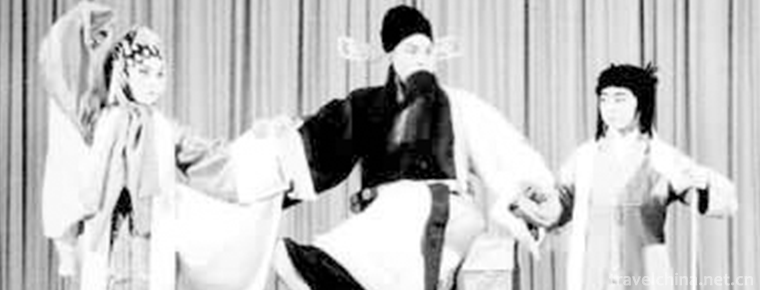
-
Jinggangshan MountainMt Jinggang
Jinggangshan, National AAAAA Tourist Scenic Spot, National Key Scenic Spot, National Nature Reserve, Chinese Cultural Scenic Spot.
Views: 190 Time 2018-12-08 -
North China National Park
The National Park in northern China covers 84 hectares. The scenic spot is a collection of ancient and modern culture of Suibin and the essence of northern nationalities..
Views: 357 Time 2018-12-22 -
Nanzhao Custom Island Dali
Nanzhao Custom Island in Dali is one of the three islands in Erhai Lake, located in Shuanglang Township at the southeast end of Eryuan County, the golden section of Cang Er National Scenic Area.
Views: 160 Time 2019-01-06 -
Castle Peak Pass Scenic Spot
Qingshankuan is located in the north of Qianxi County, 40 kilometers away from the county town, located in the Yanshan branch, the hinterland of Daqingshan Mountain..
Views: 192 Time 2019-02-07 -
Bian Embroidery
Bian embroidery, one of the traditional Chinese embroidery techniques, has a long history and is known as "national treasure". It is famous for its exquisite embroidery,.
Views: 331 Time 2019-04-04 -
Genghis Khan Festival
Genghis Khan's sacrifice is a Mongolian custom of offering sacrifices to Genghis Khan. It originated in the Wokuotai era, and was formally issued in the Kublai Khan era. It stipulated various sacrific.
Views: 180 Time 2019-04-18 -
Construction Skills of Russian Nationality Residences
Historically, Tacheng once had the reputation of "Oriental Moscow", which is by no means a historical accident. It has a close relationship with the border trade in the past 150 years.
Views: 345 Time 2019-04-28 -
Baoding old tune
Baoding old tune, also known as old tune bangzi, is one of the traditional operas with a long history in Hebei Province and a national intangible cultural heritage. At first, it was a popular Hexi tun.
Views: 359 Time 2019-05-11 -
Wood carving
Wood sculpture is a kind of sculpture, which is often called "folk craft" in our country. Wood carving can be divided into three categories: solid round carving, root carving and relief carv.
Views: 124 Time 2019-06-06 -
Naton Festival of the Turkish Nationality
Naton is a temple fair where the Tu people in Sanchuan area of Minhe County, Qinghai Province perform Nuo Dance (the first dance) and Nuo Opera (the mask dance) in order to dispel diseases and calamit.
Views: 252 Time 2019-06-23 -
Leshan tertiary industry
In 2019, the total retail sales of social consumer goods in Leshan City reached 73.87 billion yuan, an increase of 10.7% over the previous year. According to the statistics of places of operation, the retail sales of consumer goods in cities and towns .
Views: 350 Time 2020-12-17 -
Location of Meishan
Meishan is located in the southwest of Chengdu Plain and the middle reaches of Minjiang River in Sichuan Basin. It spans 29 ° 24 ′ - 30 ° 16 ′ N and 102 ° 49 ′ - 104 ° 30 ′ e. it is 150 km long from east to west and 72 km wide from south to north. It connects Chengdu,.
Views: 354 Time 2020-12-18



